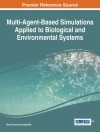Dynamics of Civil Structures, Volume 2: Proceedings of the 35th IMAC, A Conference and Exposition on Structural Dynamics, 2017, the second volume of ten from the Conference brings together contributions to this important area of research and engineering. The collection presents early findings and case studies on fundamental and applied aspects of the Dynamics of Civil Structures, including papers on:
Modal Parameter Identification
Dynamic Testing of Civil Structures
Control of Human Induced Vibrations of Civil Structures
Model Updating
Damage Identification in Civil Infrastructure
Bridge Dynamics
Experimental Techniques for Civil Structures
Hybrid Simulation of Civil Structures
Vibration Control of Civil Structures
System Identification of Civil Structures
Jadual kandungan
Chapter1. Semi-active Base Isolation of Civil Engineering Structures Based on Optimal Viscous Damping and Zero Dynamic Stiffness.- Chapter2. Long-Term Performance of Specialized Fluid Dampers Under Continuous Vibration on a Pedestrian Bridge.- Chapter3. Analysis of Variation Rate of Displacement to Temperature of Service Stage Cable-Stayed Bridge Using Temperatures and Displacement Data.- Chapter4. Triple Friction Pendulum: Does it Improve the Isolation Performance?.- Chapter5. Experimental Investigation of the Dynamic Characteristics of a Glass-FRP Suspension Footbridge.- Chapte6. Vibration-based Occupant Detection Using a Multiple-model Approach.- Chapter7. Vibration Assessment and Control in Technical Facilities using an Integrated Multidisciplinary Approach.- Chapter8. Iterative Pole-Zero Model Updating Using Multiple Frequency Response Functions.- Chapter9. Vision-Based Concrete Crack Detection Using a Convolutional Neural Network.- Chapter10. Analytical and Experimental Analysisof Rocking Columns Subject to Seismic Excitation.- Chapter11. Extending the Fixed-Points Technique for Optimum Design of Rotational Inertial Tuned Mass Dampers.- Chapter12. Temperature Effects on the Modal Properties of a Suspension Bridge.- Chapter13. Mass Scaling of Mode Shapes Based on the Effect of Traffic on Bridges: A Numerical Study.- Chapter14. Covariance-driven Stochastic Subspace Identification of an End-supported Pontoon Bridge Under Varying Environmental Conditions.- Chapter15. Probabilistic Analysis of Human-Structure Interaction in the Vertical Direction for Pedestrian Bridges.- Chapter16. Effects of Seismic Retrofit on the Dynamic Properties of a 4-Storey Parking Garage.- Chapter17. Analytical and Experimental Study of Eddy Current Damper for Vibration Suppression in a Footbridge Structure.- Chapter18. Nonlinear Damping in Floor Vibrations Serviceability: Verification on a Laboratory Structure.- Chapter19. Addressing Parking Garage Vibrations for the Design of Research and Healthcare Facilities.- Chapter20. Modeling and Measurement of a Pedestrian’s Center-of-mass Trajectory.- Chapter21. Evaluation of Mass-Spring-Damper Models for Dynamic Interaction between Walking Humans and Civil Structures.- Chapter22. Numerical Model for Human Induced Vibrations.- Chapter23. Dynamic Testing on the new Ticino Bridge of the A4 Highway.- Chapter24. Predicting Footbridge Vibrations Using a Probability-based Approach.- Chapter25. Flooring-systems and Their Interaction with Usage of the Floor.- Chapter26. Bechmark Problem for Assessing Effects of Human-structure Interaction in Footbridges.- Chapter27. A Discrete-Time Feedforward-Feedback Compensator for Real-Time Hybrid Simulation.- Chapter28. Sensing and Rating of Vehicle–Railroad Bridge Collision. Chapter29. High-Frequency Impedance Measurements for Microsecond State Detection.- Chapter30. Structural Stiffness Identification of Skewed Slab Bridges with Limited Information for Load Rating Purpose.- Chapter31. Online Systems Parameters Identification for Structural Monitoring Using Algebraic Techniques.- Chapter32. Structural Vibration Control Using High Strength and Damping Capacity Shape Memory Alloys.- Chapter33. Comparative Study on Modal Identification of a 10 Story RC Structure Using Free, Ambient, and Forced Vibration Data.- Chapter34. Kronecker Product Formulation for System Identification of Discrete Convolution Filters.- Chapter35. Calibration-Free Footstep Frequency Estimation using Structural Vibration.- Chapter36. Optimal Bridge Displacement Controlled by Train Speed on Real-Time.- Chapter37. System Identification and Structural Modeling of Italian School Buildings.- Chapter38. Investigation of Transmission of Pedestrian-Induced Vibration into a Vibration-sensitive Experimental Facility.- Chapter39. An Ambient Vibration Test of an R/C Wall of an 18-story Wood Building at the UBC Campus.- Chapter40. The Day the Earth Shook: Controlling Construction-Induced Vibrations in Sensitive Occupancies.- Chapter41. An Exploratory Study on Removing Environmental and Operational Effects Using A Regime-Switching Cointegration Method.- Chapter42. Evaluation of Contemporary Guidelines for Floor Vibration Serviceability Assessment.- Chapter43. Excitation Energy Distribution of Measured Walking Forces.- Chapter44. Identification of Human-induced Loading using a Joint Input-state Estimation Algorithm.
Mengenai Pengarang
Dr. Juan Caicedo is Professor of Civil Engineering at the University of South Carolina. Dr. Shamim Pakzad is Associate Professor of Civil Engineering at Lehigh University.












